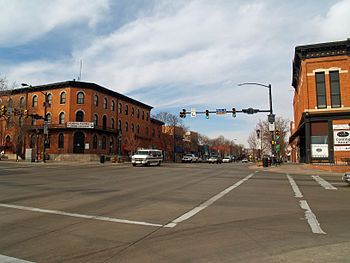
English: Looking north from the intersection of Main St. and 3rd Ave. towards the 300 block of Main St. Longmont, Colorado. (Photo credit: Wikipedia)
Governments do not tend to learn from their mistakes, they just cover them up with more money. Even detailed articles like these fail to ask the question whether government should be doing this or are there better ways of delivering broadband services.
By Karen Antonacci
Paul Radliff, of Longmont, had his home connected via fiber-optic cable to the city’s new high-speed Internet service earlier this month.
Under his old DSL service, he could download information at a speed of 20 megabits per second.
With the new municipal network, his Internet, as long as it’s wired in, is now 43 times faster — on a bad day.
“The speed’s amazing,” Radliff said. “It’s like 100 megabits per second more than we ever need. … Playing movies on my TV is almost instantaneous.”
After aiming to be among the first in the nation to do so, Longmont is now rounding out an 18-year journey into offering Internet service through its municipal utility.
It took two private-partnership busts, three elections, $45.3 million and a particularly divisive piece of state legislation, but Longmont is connecting the first customers to NextLight, its “fiber-to-the-home” service.







